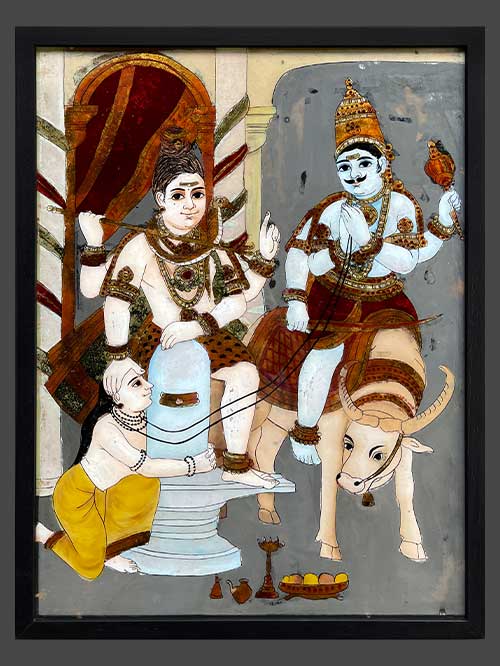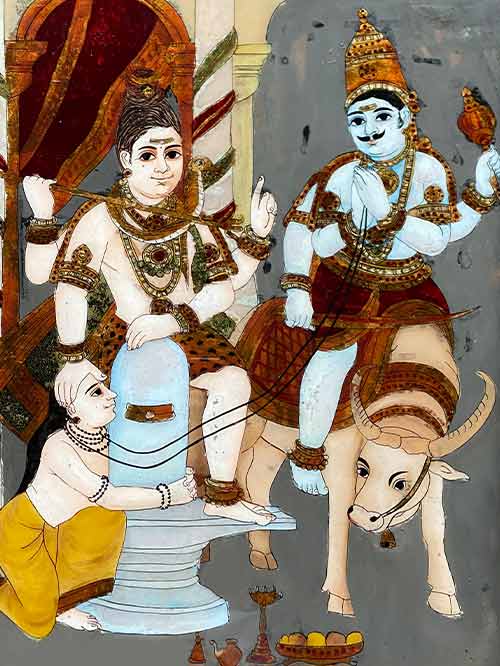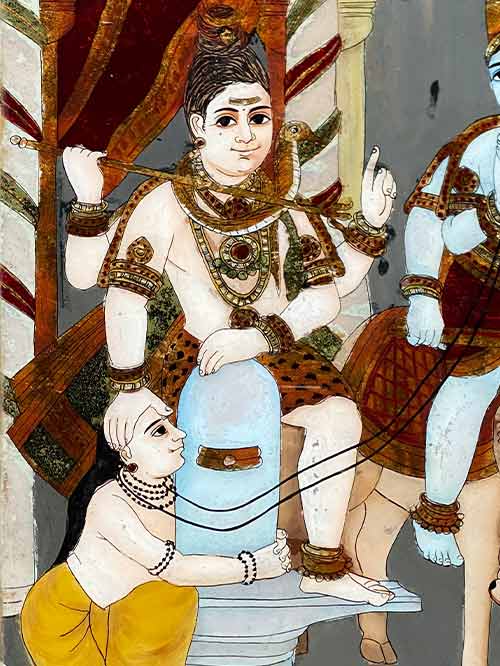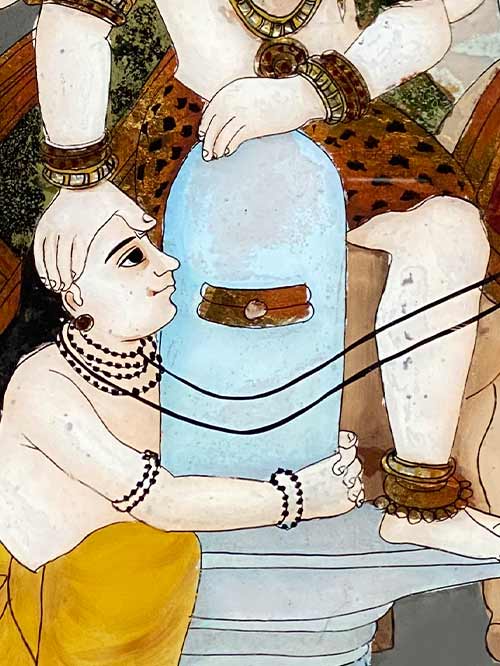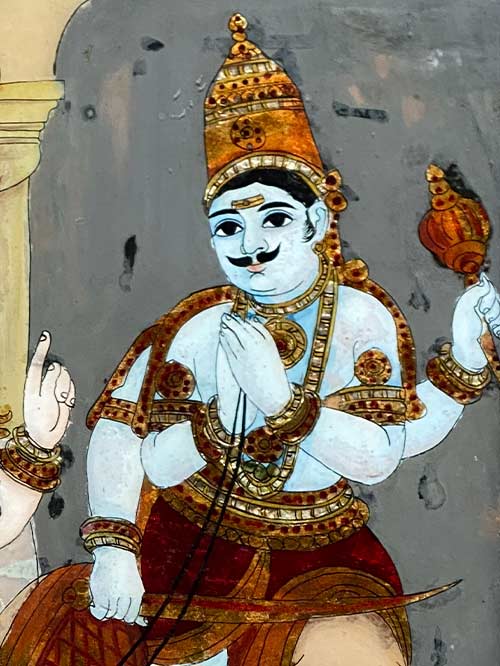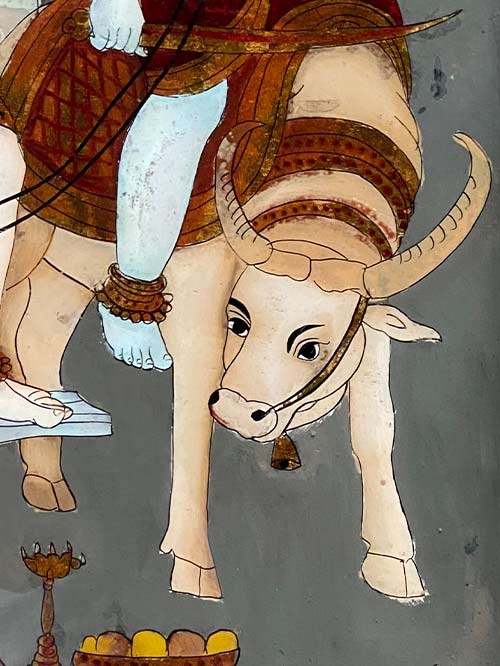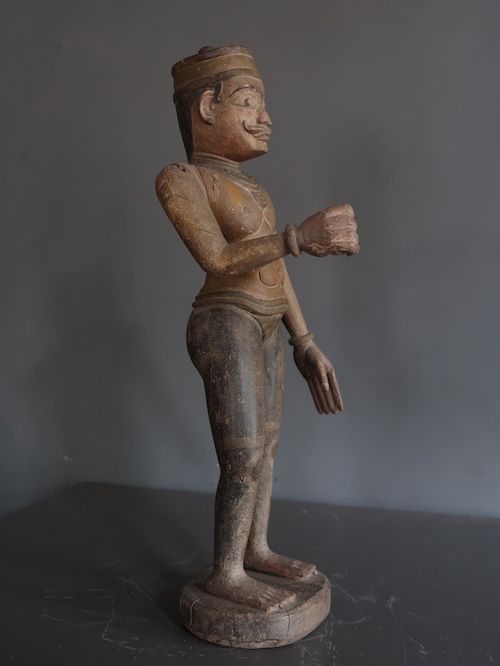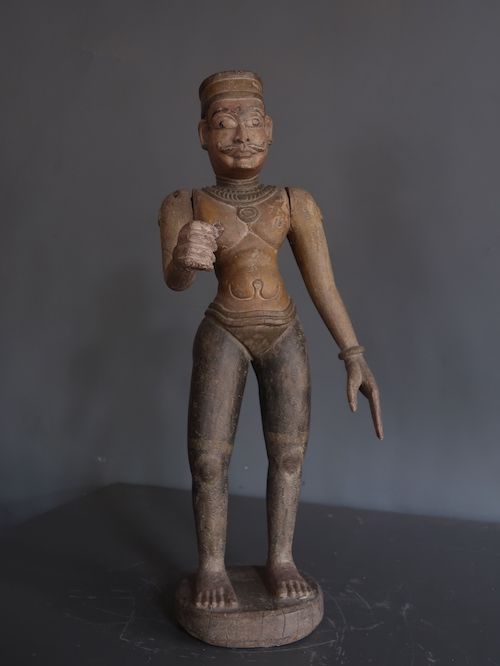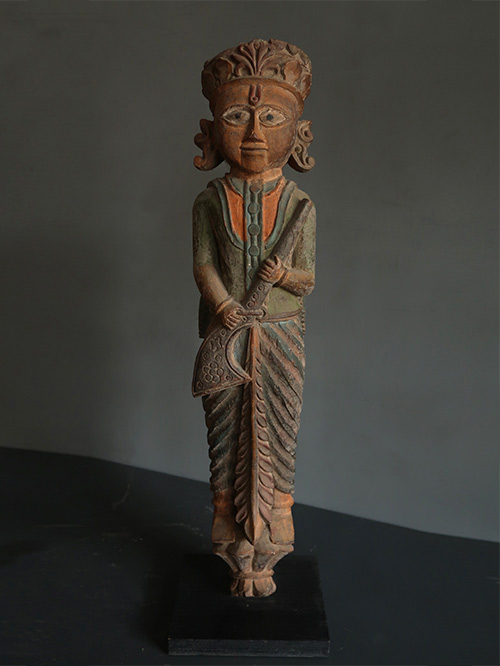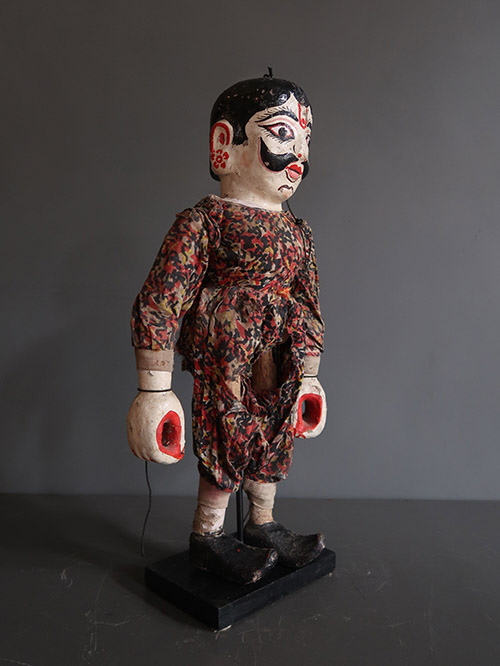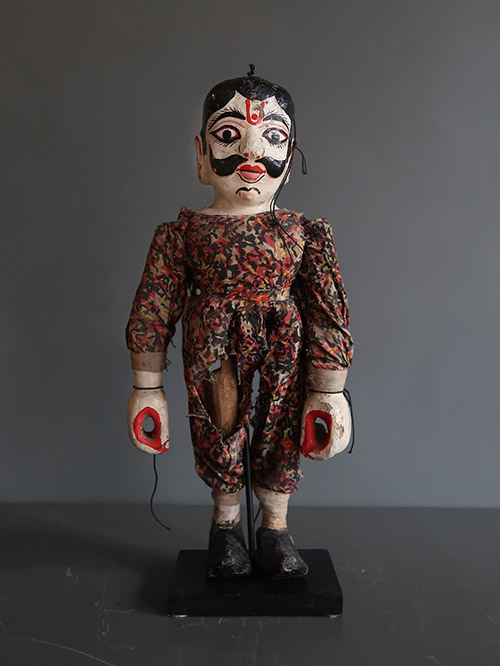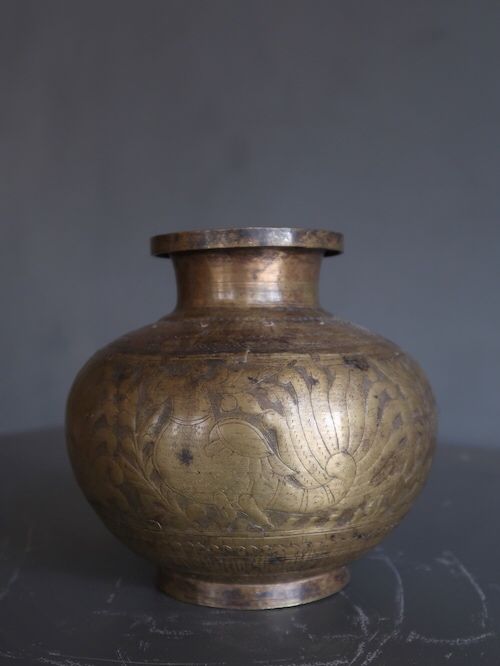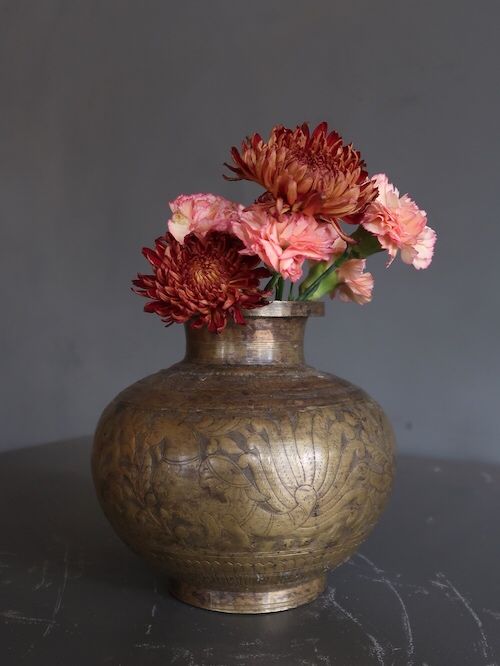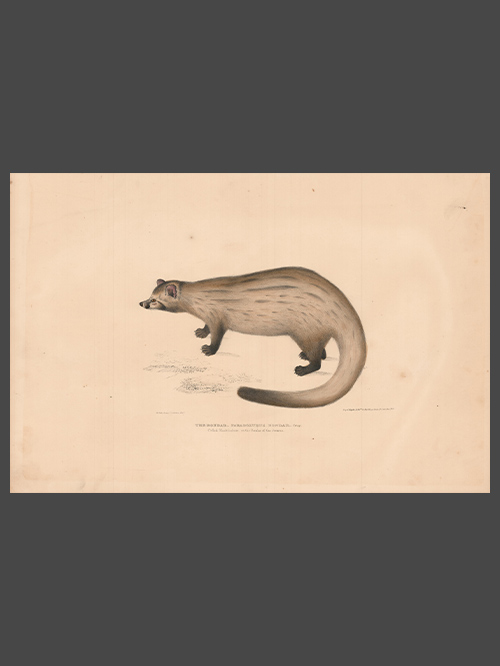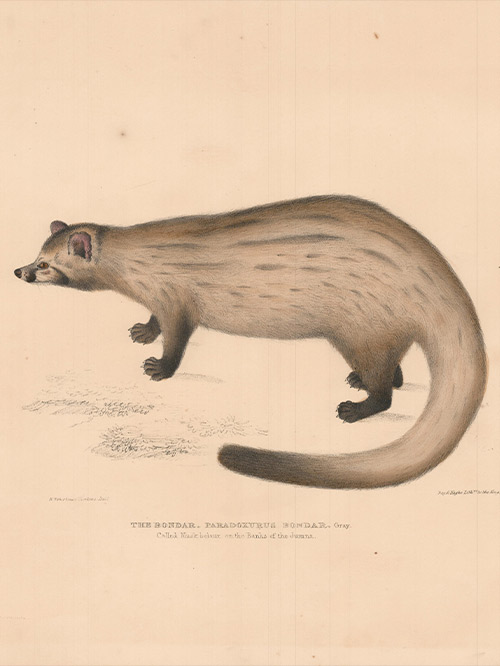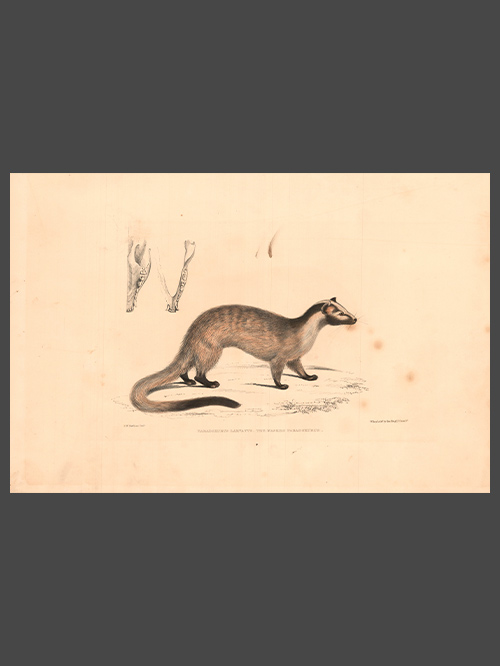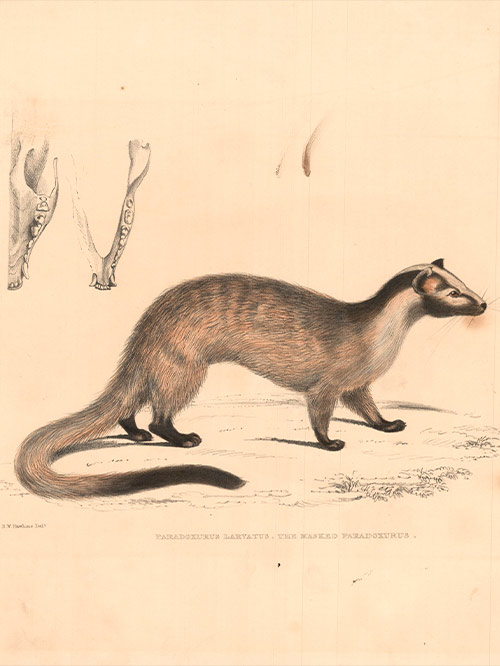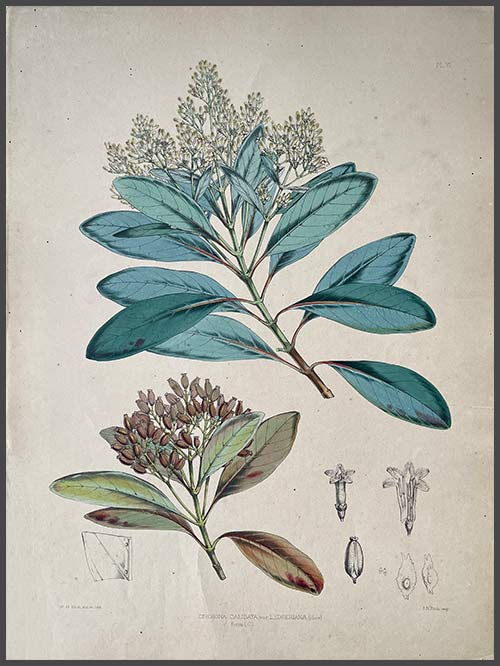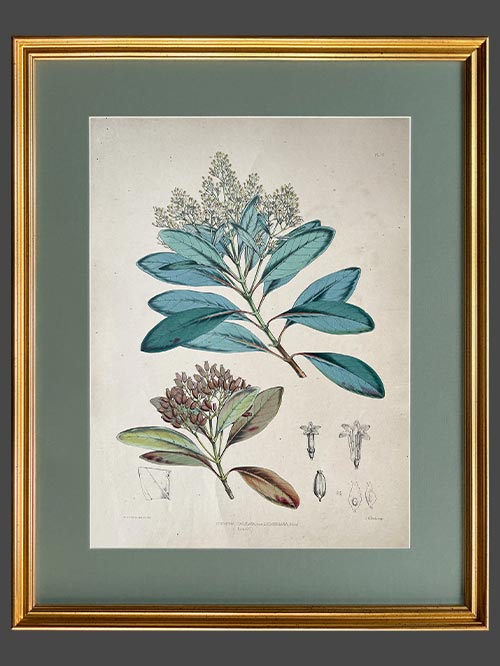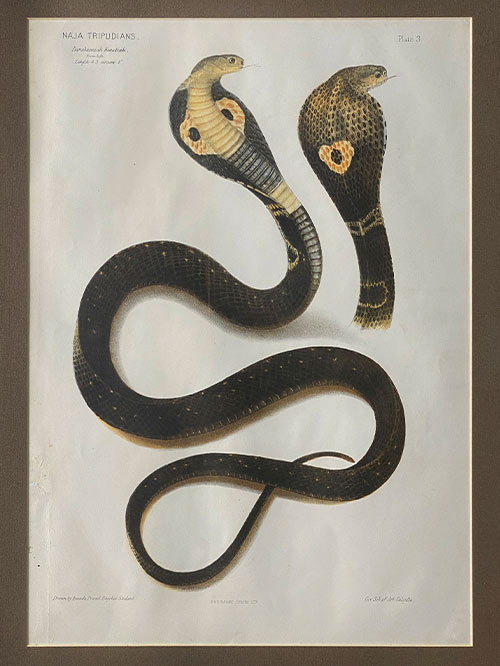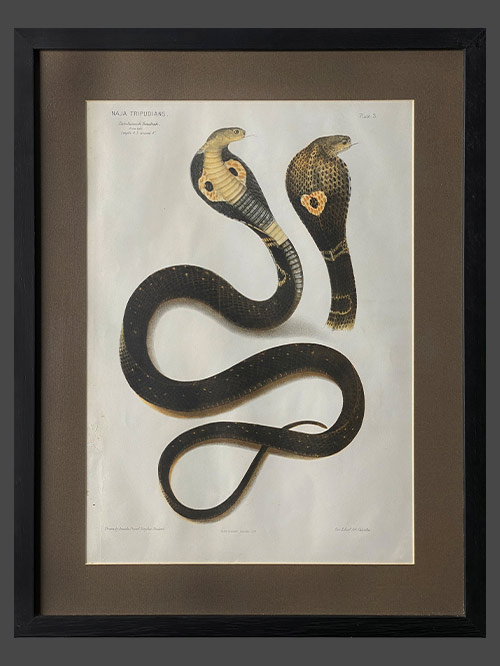Tanjore (South India)
reverse painting on glass
The painting illustrates a famous incident connected to the Thirukkadaiyur temple, one of the 257 Shiva holy sites. Here Shiva bestows his grace upon his devotee, Markandeya, who was destined to die at the age of 16. On the fateful day, Markandeya was filled with terror at the sudden apparition of Yama, armed with club, sword and noose and riding on his characteristic buffalo. The frightened youth clings tenaciously to the linga. At that moment Shiva appears, and threatens Yama with his trishula. Yama, whose noose is already around the youth’s neck, folds his hands in anjali mudra thus acknowledging his defeat.
Reverse glass paintings were introduced into India the late 18th century from China by way of the China Trade. Indian artists adopted the technique of reverse glass painting partly on account of its novelty and also because it was a relatively inexpensive medium which could produce rich effects. The technique proved extremely popular and soon spread through western and southern India and even to former provincial Mughal capitals of Oudh, Murshidabad.
In Tanjore – a small state with an old art tradition- a distinctive school of glass painting developed in the early 19th century and continued for more than a hundred years. The style was essential Indian – it tended to repeat patterns of regional painting: images of deities, portraits and themes form the ancient myths, secular themes such as portraits of kings or nobles, courtesans and musicians. The colour was rich and the style bold and defiant. The subjects were clearly presented with a certain opulence and glamour.
Framed Size (cms): 66(H) x 51(W)
Framed Size (inches):26(H) x 20(W)

